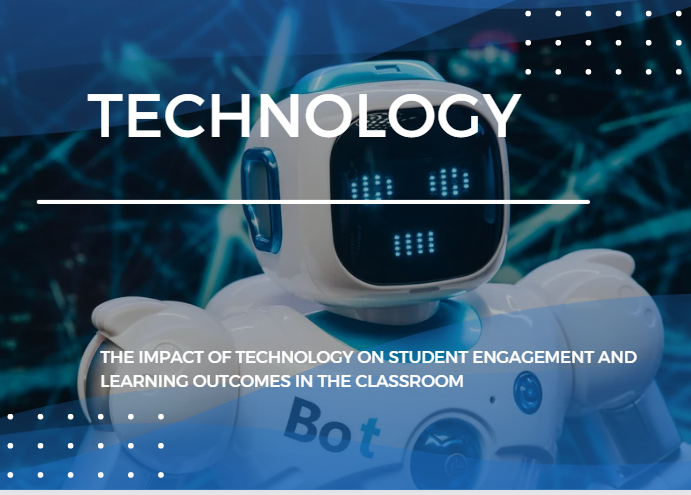In today’s digital age, technology has become a cornerstone of education, profoundly transforming how students learn, engage, and interact with their academic environments. This article explores the significant impact of technology on student learning, offering insights and evidence from various educational settings.
Introduction to Technology in Education
Technology in education includes tools like computers, tablets, educational software, and internet resources that support both teaching and learning processes. These tools not only provide diverse learning materials but also enable innovative teaching methodologies.
Enhancing Engagement and Interaction
One of the most notable benefits of technology in education is its ability to enhance student engagement. Interactive tools and multimedia presentations can make learning more enjoyable and memorable. For instance, using videos, interactive simulations, and gamification, teachers can present complex concepts in ways that are easier for students to understand and retain.
Personalized Learning Experiences
Technology allows for personalized education, where learning activities are tailored to the individual needs of each student. Adaptive learning software assesses a student’s current knowledge and adjusts the curriculum accordingly, ensuring that all students receive the support and challenge they need to advance efficiently.
Access to Information and Resources
The internet has broken down geographical barriers, providing students with unlimited access to information and educational resources. Platforms like Khan Academy, Coursera, and even specific sites like https://ehallpassinsider.com/ offer a wealth of knowledge that students can access anytime, enhancing their learning opportunities beyond the classroom.
Collaboration Beyond Classroom Walls
Technologies such as cloud services, discussion forums, and group collaboration tools enable students to work together on projects, even when they are not physically together. This collaboration can help develop critical soft skills like communication, problem-solving, and teamwork.
Challenges and Considerations
Despite its benefits, the integration of technology in education comes with challenges. These include the digital divide, where not all students have equal access to technology, and concerns about screen time and its impact on students’ health and social skills.
Case Study: eHallPass
An example of educational technology in action is e Hall Pass, a digital system that manages hall passes electronically. Implementing eHallPass in schools has streamlined the process of issuing and monitoring hall passes, making it more efficient and less disruptive to class time. For more details on how eHallPass works, students and educators can visit the Login eHallpass page at their website.
Conclusion
The impact of technology on student learning is significant and multifaceted. It offers vast opportunities for enhancing educational experiences and outcomes. However, it is essential to address the accompanying challenges to maximize its benefits. As educational technology continues to evolve, it holds the promise of further transforming learning landscapes, making education more accessible, interactive, and effective for every student.
Tips
Start Small: Begin by incorporating basic tools like presentation software or digital quizzes to build confidence among both students and teachers.
Focus on Training: Ensure that both educators and students are properly trained on how to use new technologies to maximize their potential benefits.
Evaluate and Adapt: Regularly assess the effectiveness of technology used in the classroom and be open to making adjustments based on feedback from students and teachers.
FAQs About Technology in Education
Q1: How can technology improve student engagement?
A1: Technology can make learning more interactive and fun through multimedia content, interactive simulations, and gamified elements, which help maintain students’ interest and motivation.
Q2: What are the risks of using technology in education?
A2: Overreliance on technology can lead to reduced face-to-face interactions and physical activity, potential distractions, and exacerbate the digital divide between students with and without access to technological resources.
Q3: Can technology replace traditional teaching methods?
A3: While technology can enhance traditional teaching, it should not replace it. The best educational outcomes are often achieved by blending technology with traditional hands-on and personal interaction methods.
How Problem Solving Keeps Advanced Students Challenged(Opens in a new browser tab)
Things to Consider When Implementing Educational Technology
Accessibility: Ensure that all students have equal access to the technology required for their courses to prevent widening the educational gap.
Privacy and Security: Adopt technologies that protect student data privacy and ensure that these tools comply with relevant educational standards and laws.
Cost vs. Benefit: Consider the cost of new technology against the educational benefits it offers. Investing in expensive technology should have a demonstrable impact on improving student outcomes.
